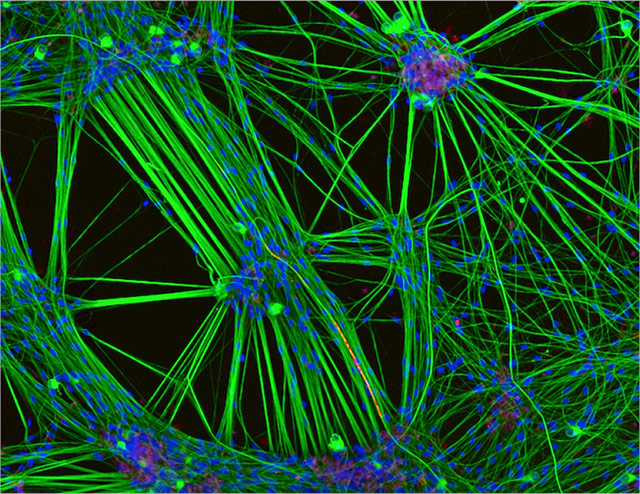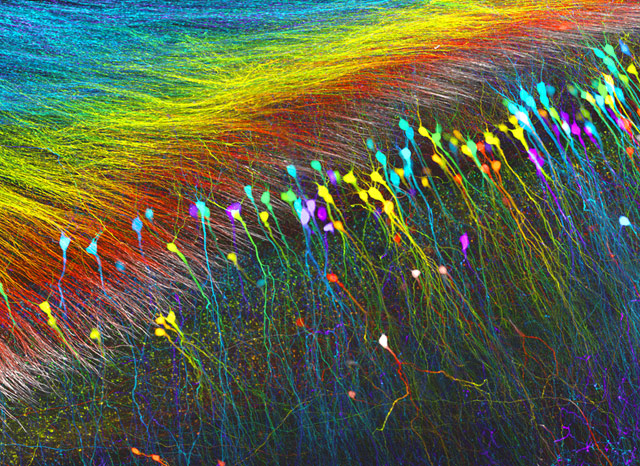WEEK OF
October 17th
It’s been nearly a year since Thomas Insel stepped down as director of the U.S. National Institute of Mental Health (NIMH). Insel invested heavily in basic neuroscience research during his 13-year tenure, reasoning that a better understanding of the brain would reveal targets for treatments for brain conditions. But not everyone agrees with his strategy.
In an op-ed in The New York Times last week, psychiatrist John Markowitz argues that Insel’s intense focus on neuroscience disregarded people who will never reap the benefits of those basic discoveries.
“Staking all your money on one bet, as the institute did under Dr. Insel, has consequences,” writes Markowitz, professor of clinical psychiatry at Columbia University.
Markowitz says that clinical research exploring the effects of existing drugs and therapies is just as important as understanding the nuts and bolts of the brain. But this kind of research, he says, “slowed to a trickle” under Insel, now accounting for just 10 percent of the NIMH budget.
“Many clinical researchers like myself worry that this kind of research will disappear,” he writes, appealing to the newly appointed NIMH director, Joshua Gordon, to change the agency’s course. “We need both neuroscience and clinical research. I hope the institute will re-establish that balance.”
Nikon has announced the winners of its annual photomicrography competition, and they do not disappoint. The first place image shows a zebrafish embryo. An image of glowing green neurons derived from skin cells took home the third-place prize — $1,000 toward Nikon equipment. A rainbow of neurons in the brain’s memory hub, called the hippocampus, also earned a nod.

Neurons derived from skin cells (green with blue nuclei) mingle with another type of brain cell, called Schwann cells (red). Image by Rebecca Nutbrown of Oxford University.

Neurons of the hippocampus, the brain’s memory hub, glow in vibrant colors. Image by Wutian Wu at the University of Hong Kong.
When researchers find a genetic variant in someone with a disease or condition, they check to make sure the variant is absent from the general population. This helps to minimize the possibility that the variant is present by chance.
For two years, the Exome Aggregation Consortium (ExAC) has been the go-to resource for this crucial step, containing gene sequences for 60,000 people. In August, researchers used the database to reveal that 192 variants thought to be disease-causing are actually common in the population.
An article in Nature last week laid out ExAC’s many strengths. And on Wednesday, researchers announced that the database has doubled in size. It now boasts gene sequences for 126,216 people, according to data presented at the American Society for Human Genetics Annual Meeting in Vancouver, Canada. It also contains whole-genome sequences, which cover the swaths of DNA between genes, for 15,136 individuals, GenomeWeb reports. Last but not least, it has an adorable new name: GnomAD, for the Genome Aggregation Database.
The expanded database includes individuals from a wide range of ancestries, including individuals of Ashkenazi Jewish descent, according to Daniel MacArthur, co-director of medical and population genetics at the Broad Institute in Cambridge, Massachusetts.
The advocacy group Autism Speaks has modified its mission, swapping words such as ‘cure’ and ‘hardship’ for ‘solutions’ and ‘acceptance.’
Disability Scoop, a developmental disability news site, pointed out the change in direction last week, noting that it caps a year of leadership turnover at Autism Speaks. The move appears to address mounting criticism of the nonprofit’s focus on a cure and lack of representation from people on the spectrum.
“Autism Speaks was founded on the goal of curing autism as one of its objectives,” Stephen Mark Shore, a new board member who has autism, told Disability Scoop. “However, similar to many experiences of parents of children with autism, the organization grew to believe that autism is something to be worked with for promoting fulfilling and productive lives of people on the spectrum.”
You can read the new mission statement on the Autism Speaks website.
Move over, Jennifer Doudna, one of the creators of CRISPR. Jennifer Lopez is working on a TV drama about the gene-editing tool, according to The Hollywood Reporter.
The show will center on a scientist tasked with thwarting CRISPR-related crimes, such as “a genetic assassination attempt on the president.” And I, for one, am intrigued.
Meanwhile, the real-world drama surrounding CRISPR is intensifying. Lawyers from the Broad Institute and the University California, Berkley, continue to duke it out in patent court, each claiming their scientists invented the revolutionary technology. In the midst of this battle, a French biotech firm called Cellectis has revealed that it holds patents for gene-editing techniques that use enzymes to cut and repair DNA — including CRISPR.
Making a career move? Send your news to [email protected].
By joining the discussion, you agree to our privacy policy.